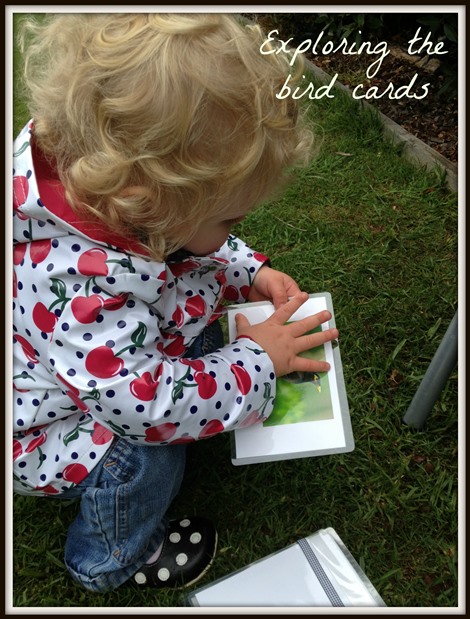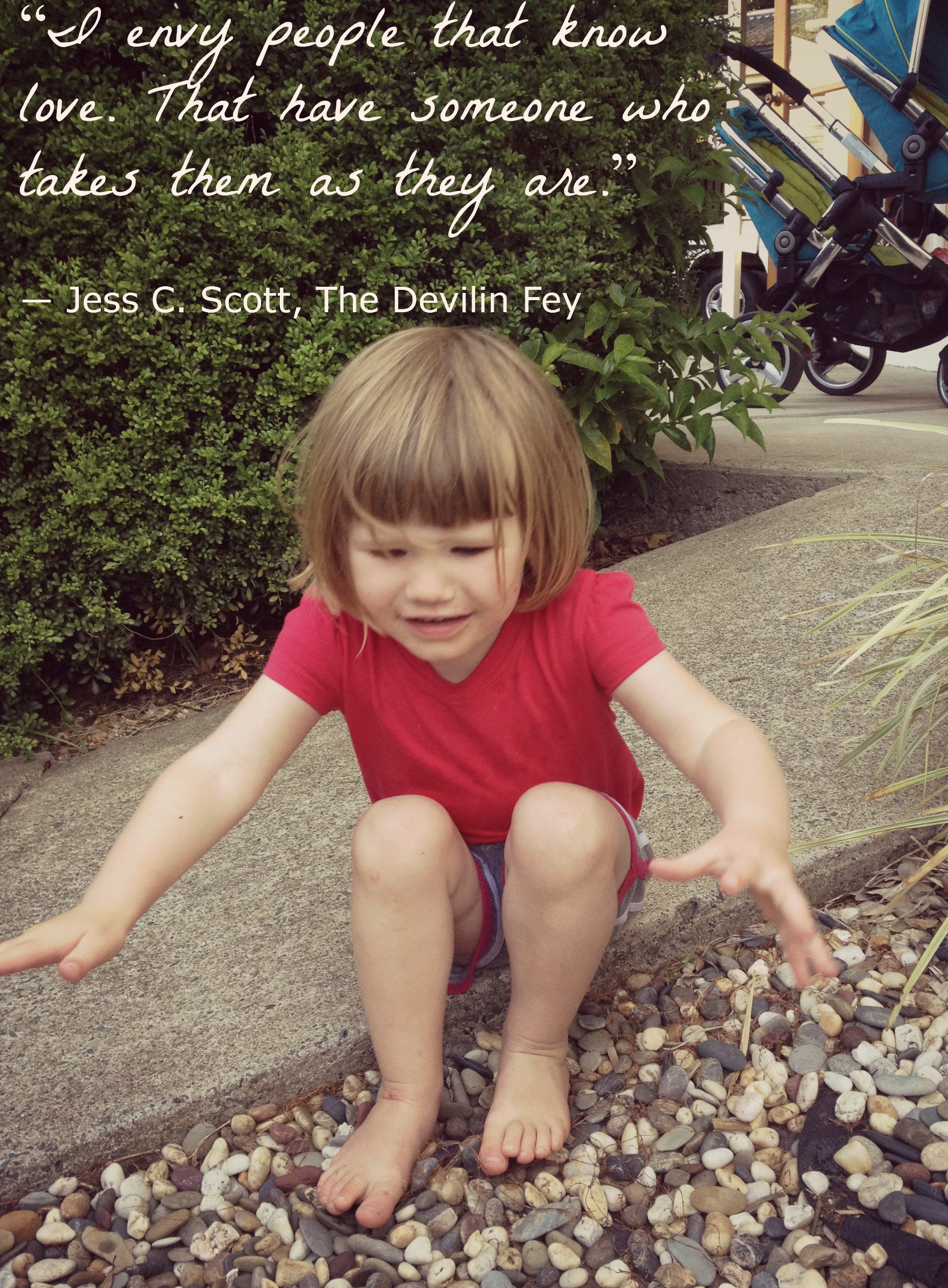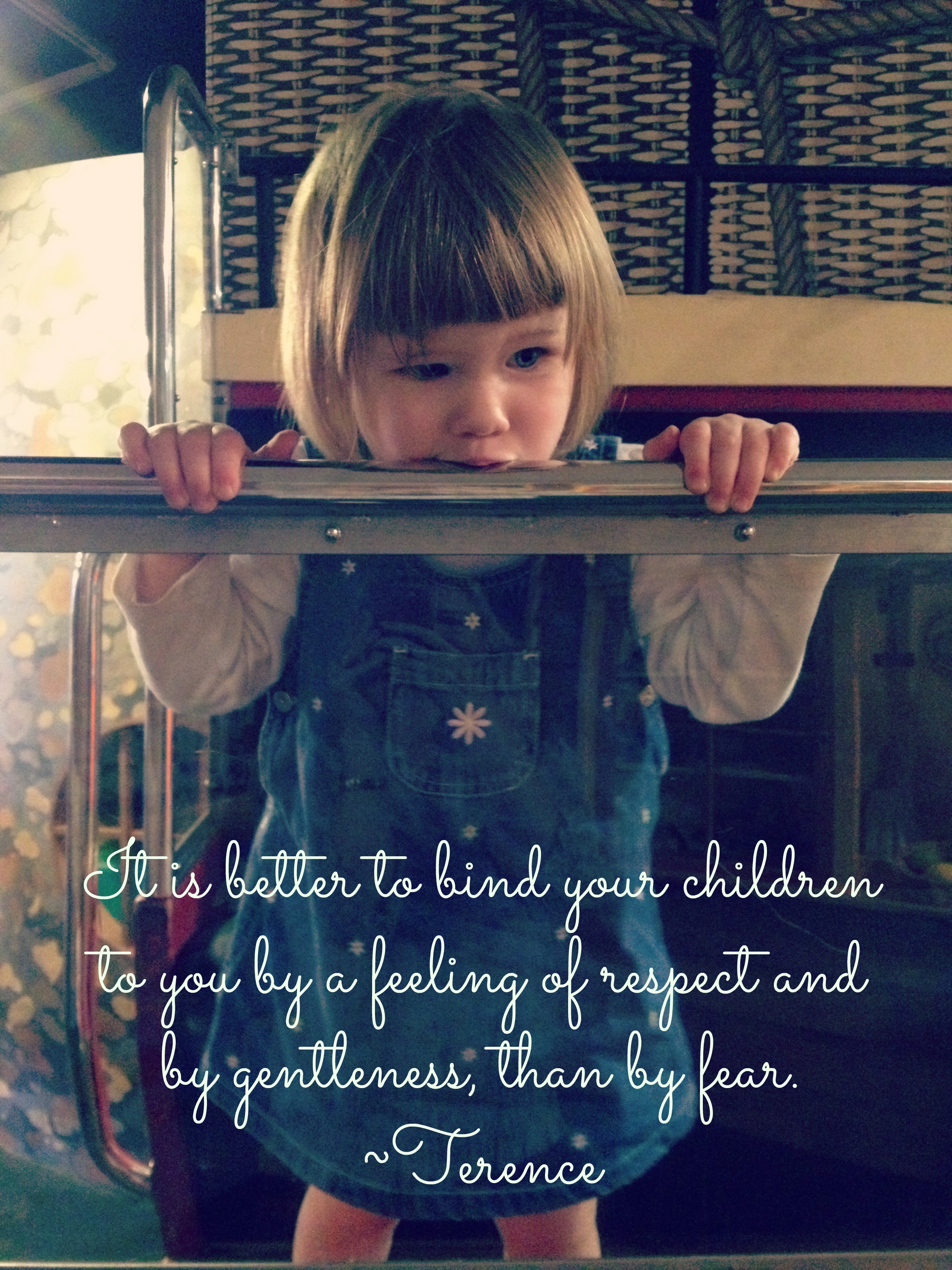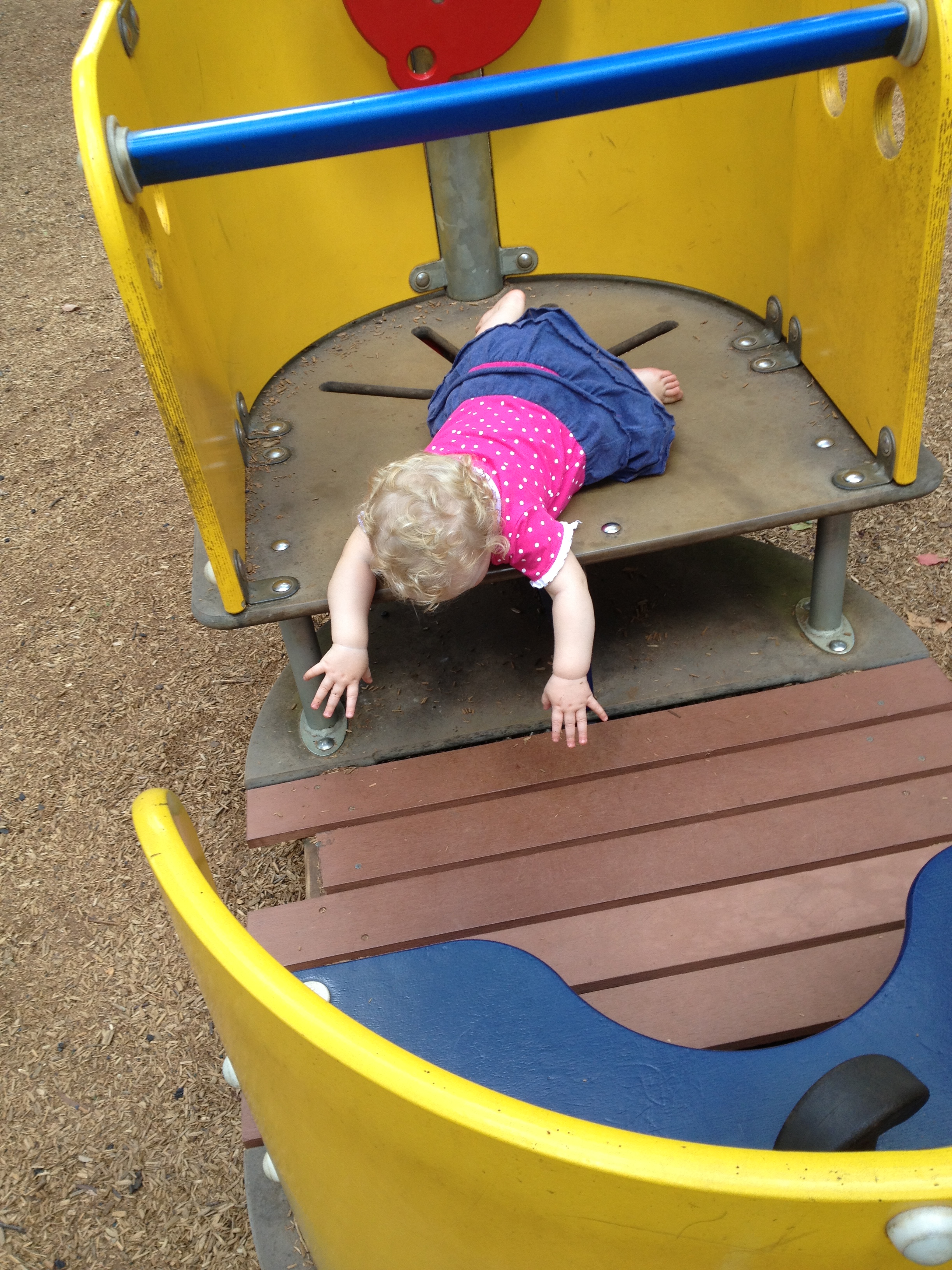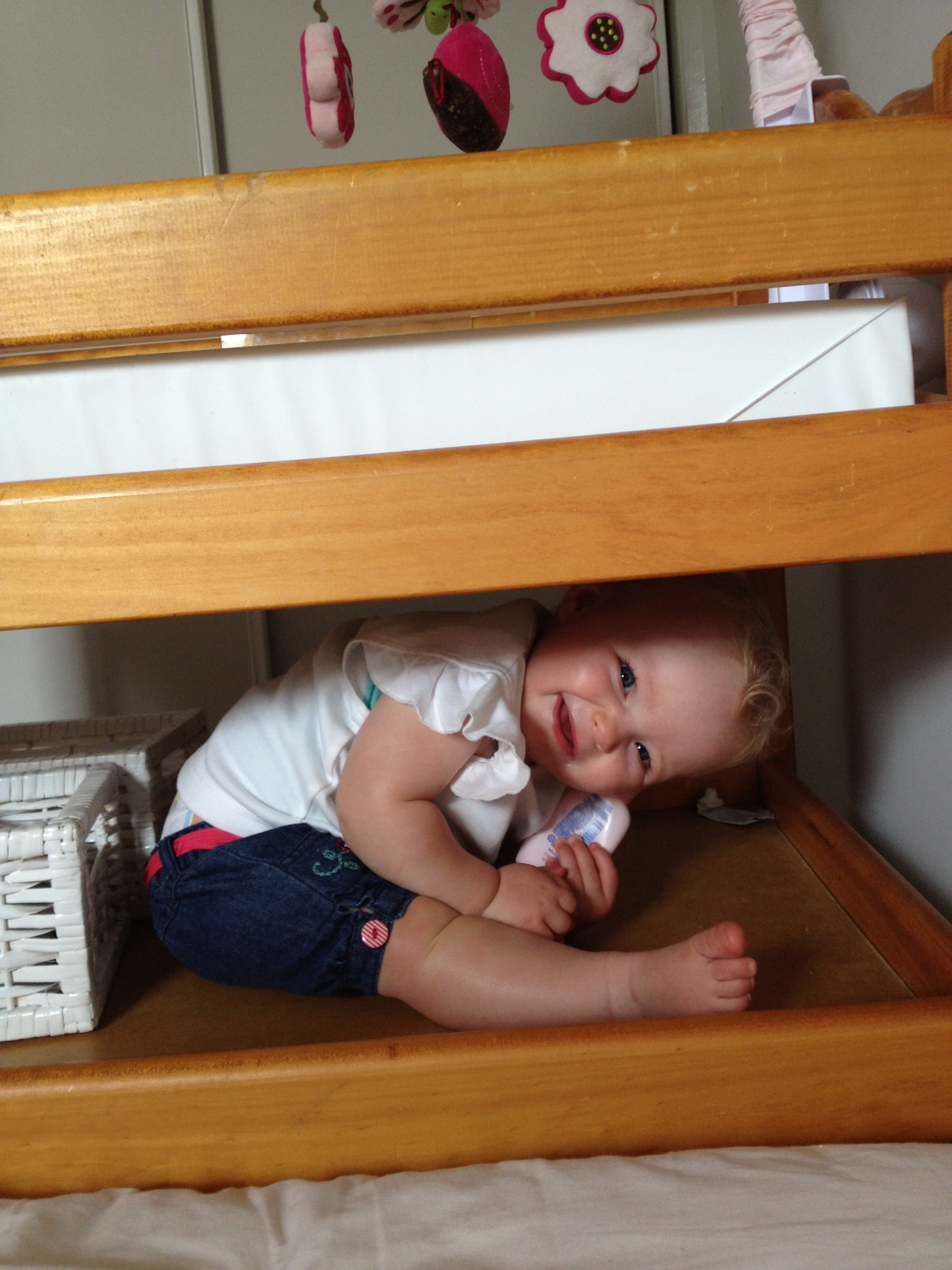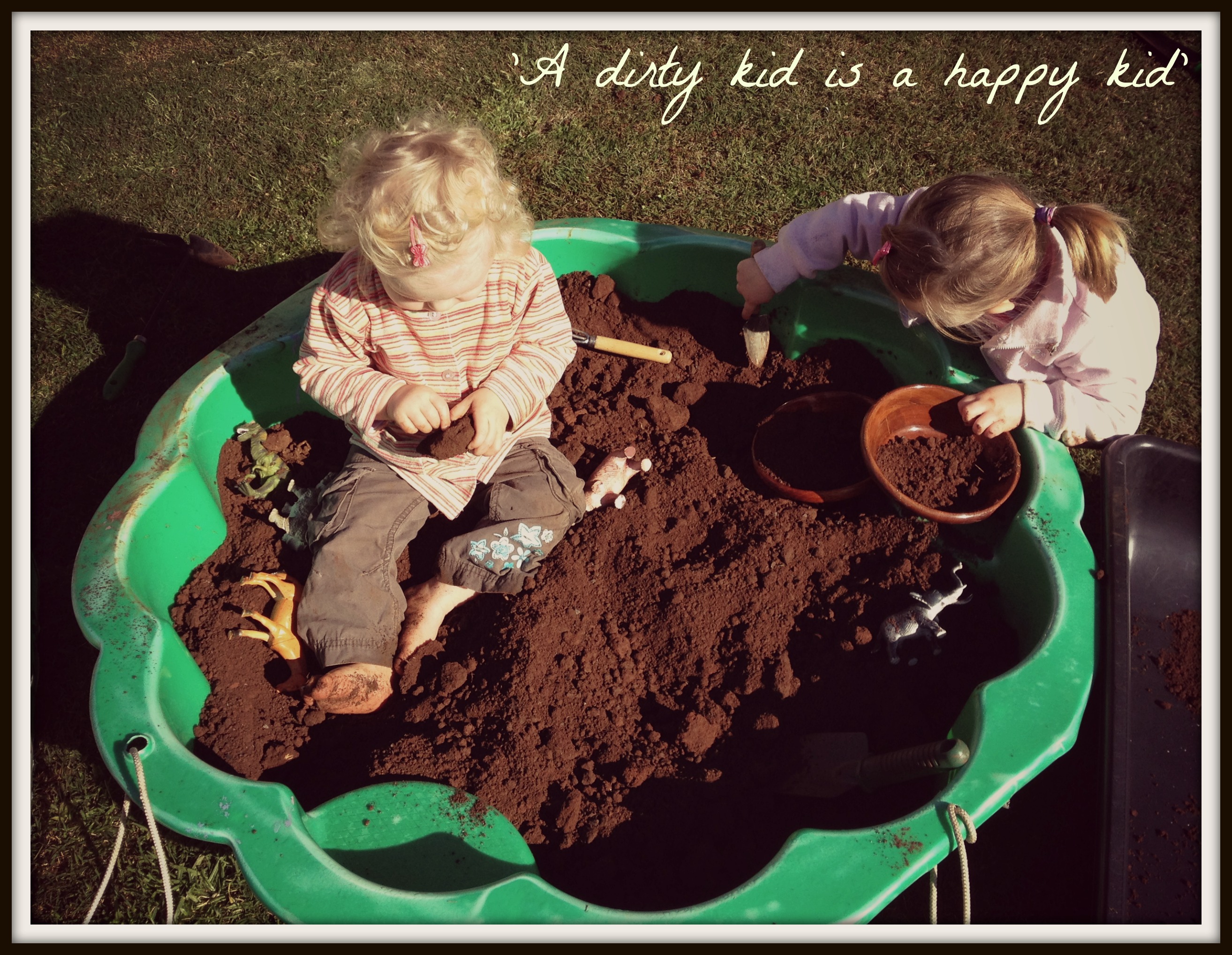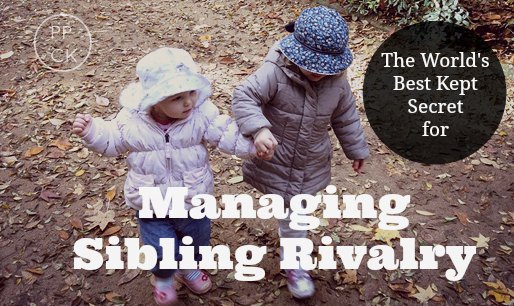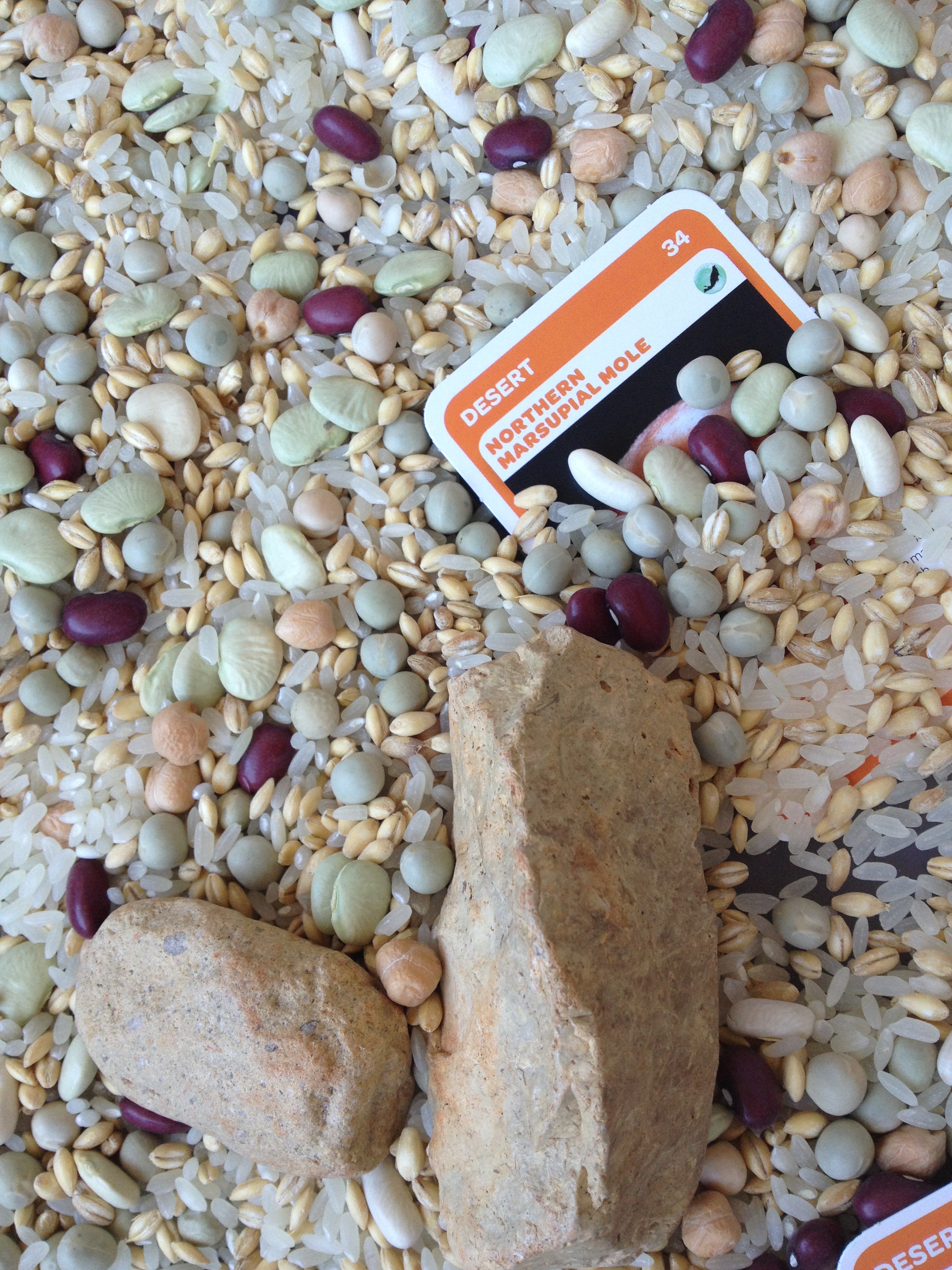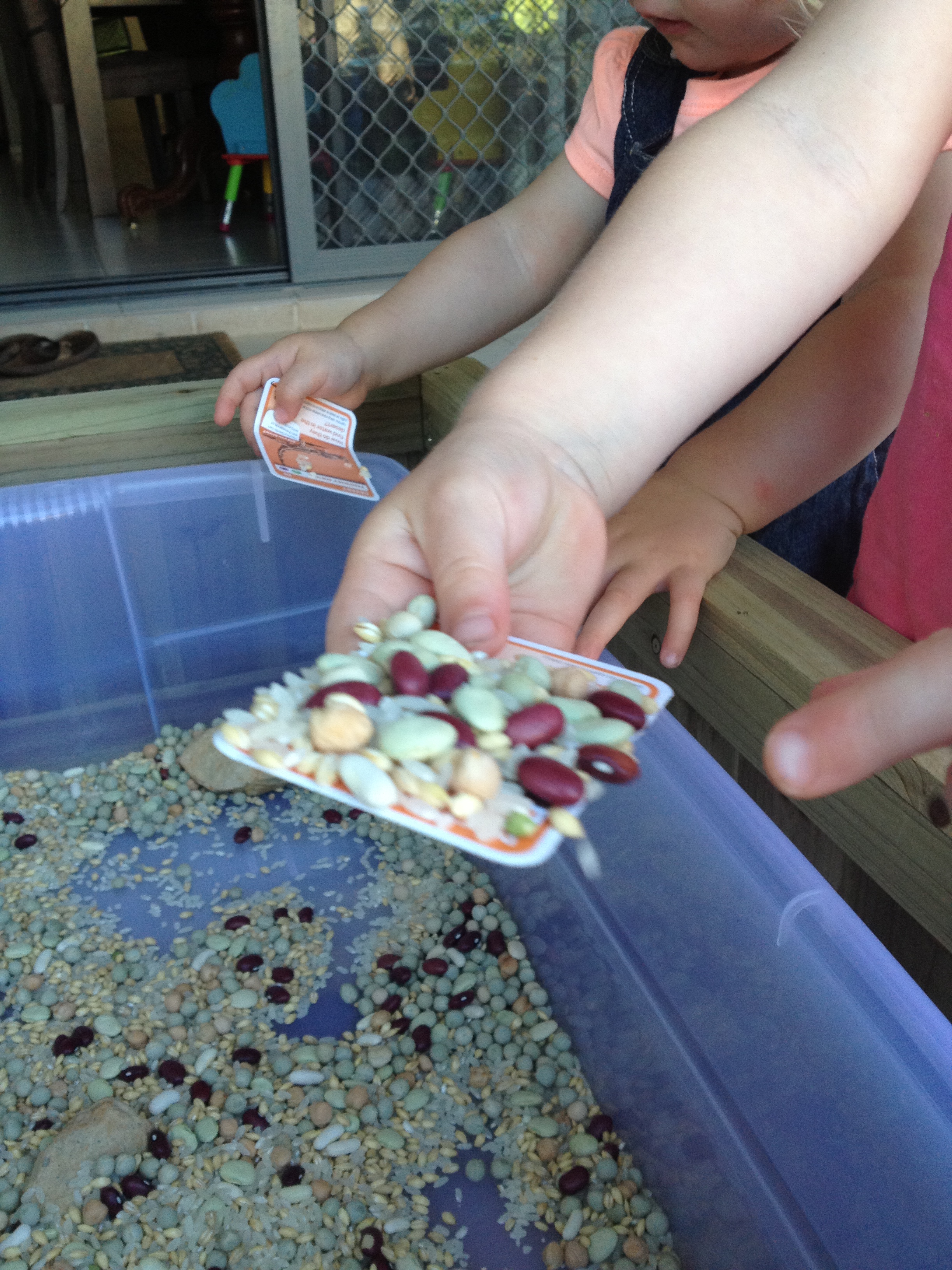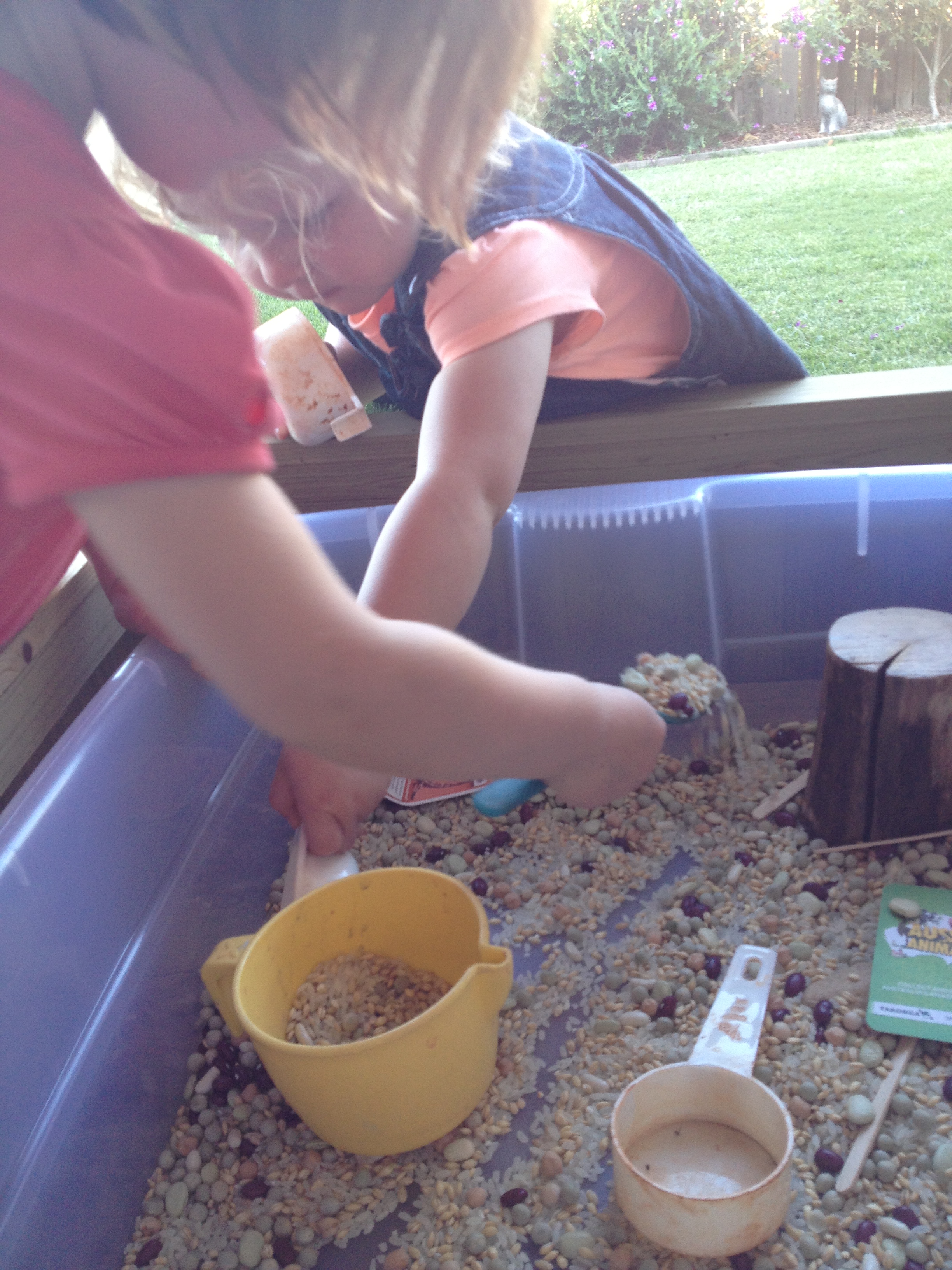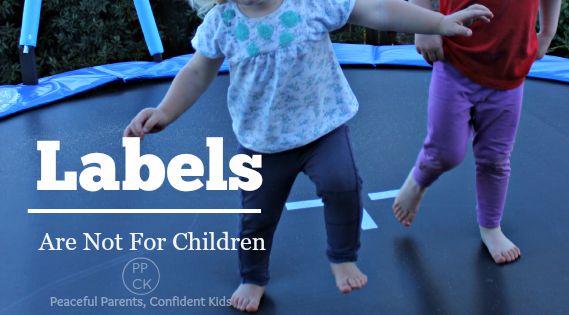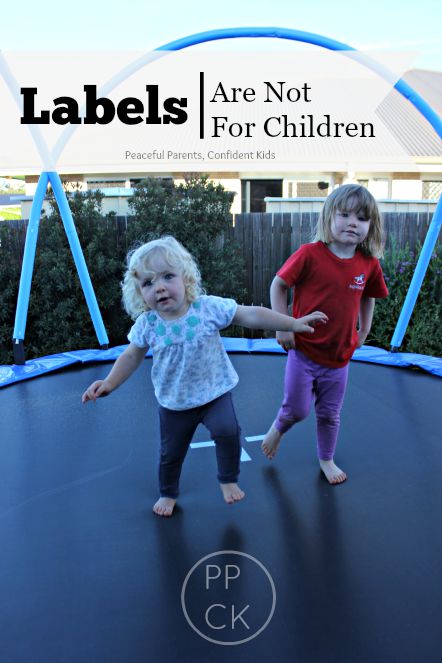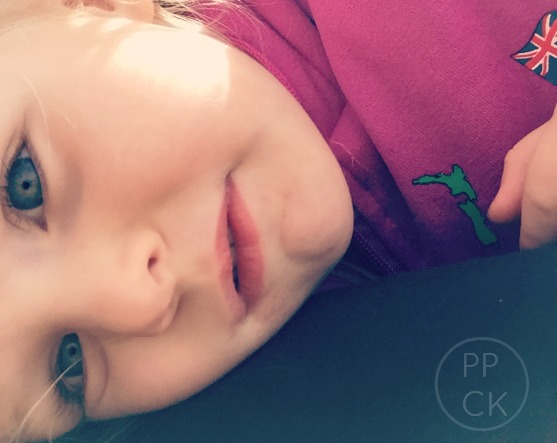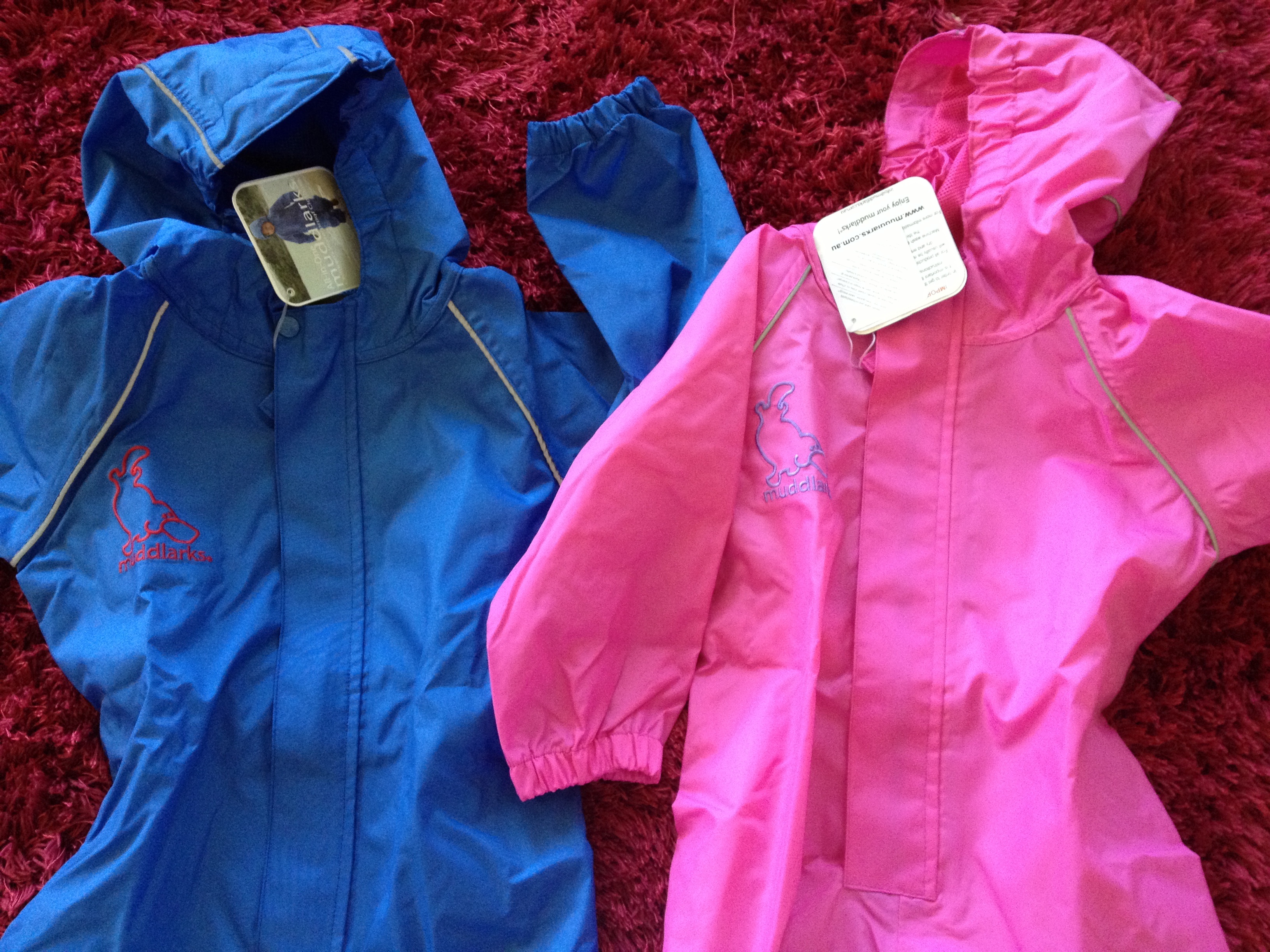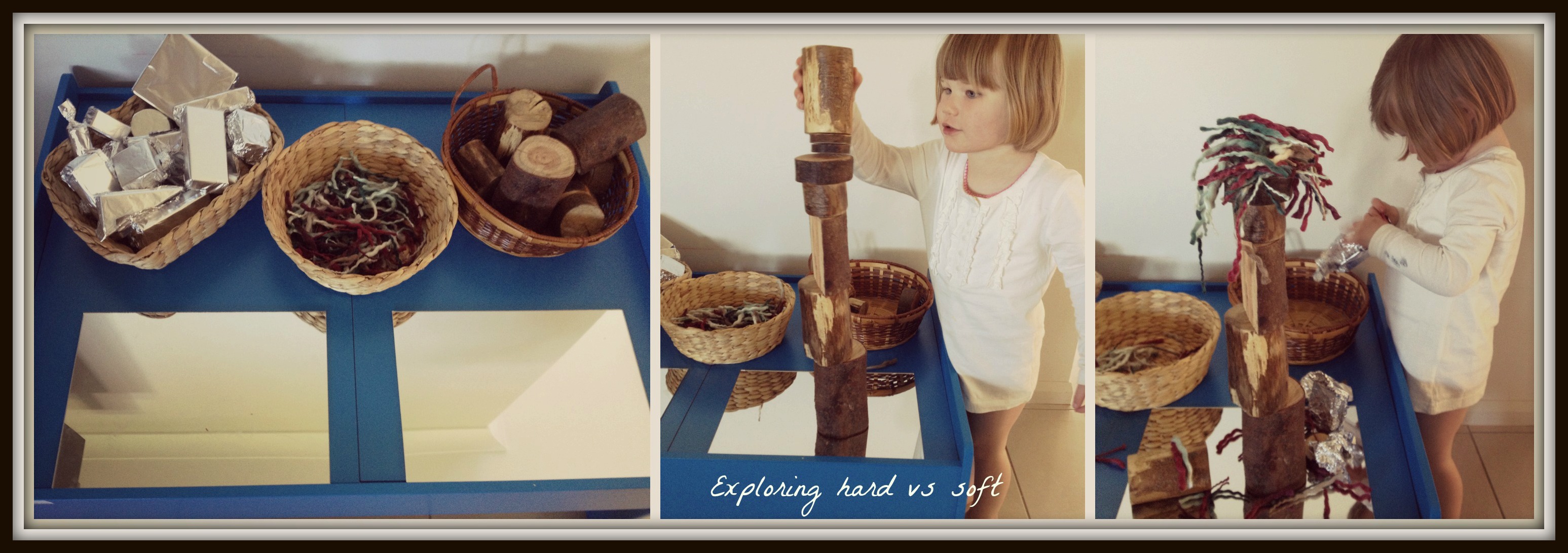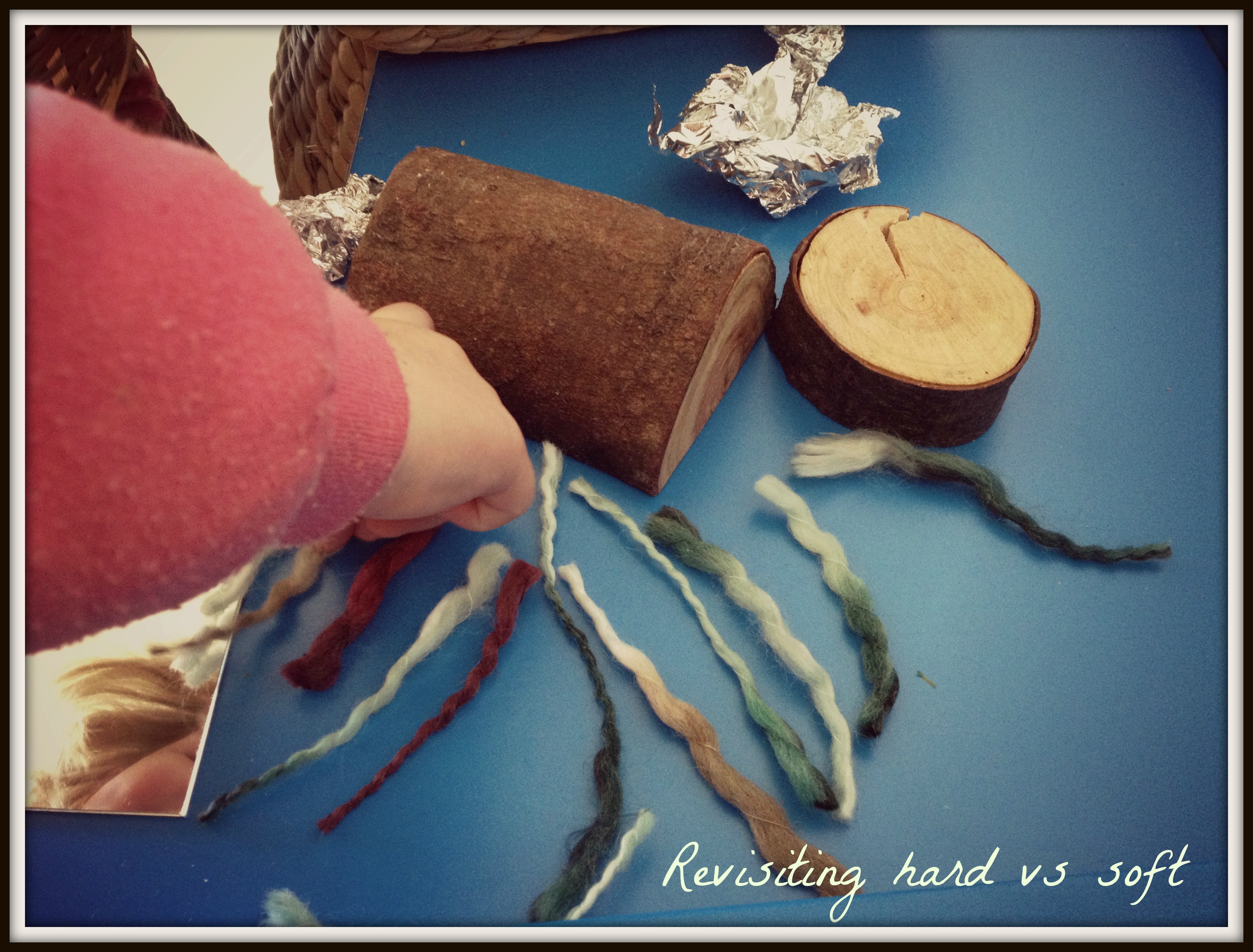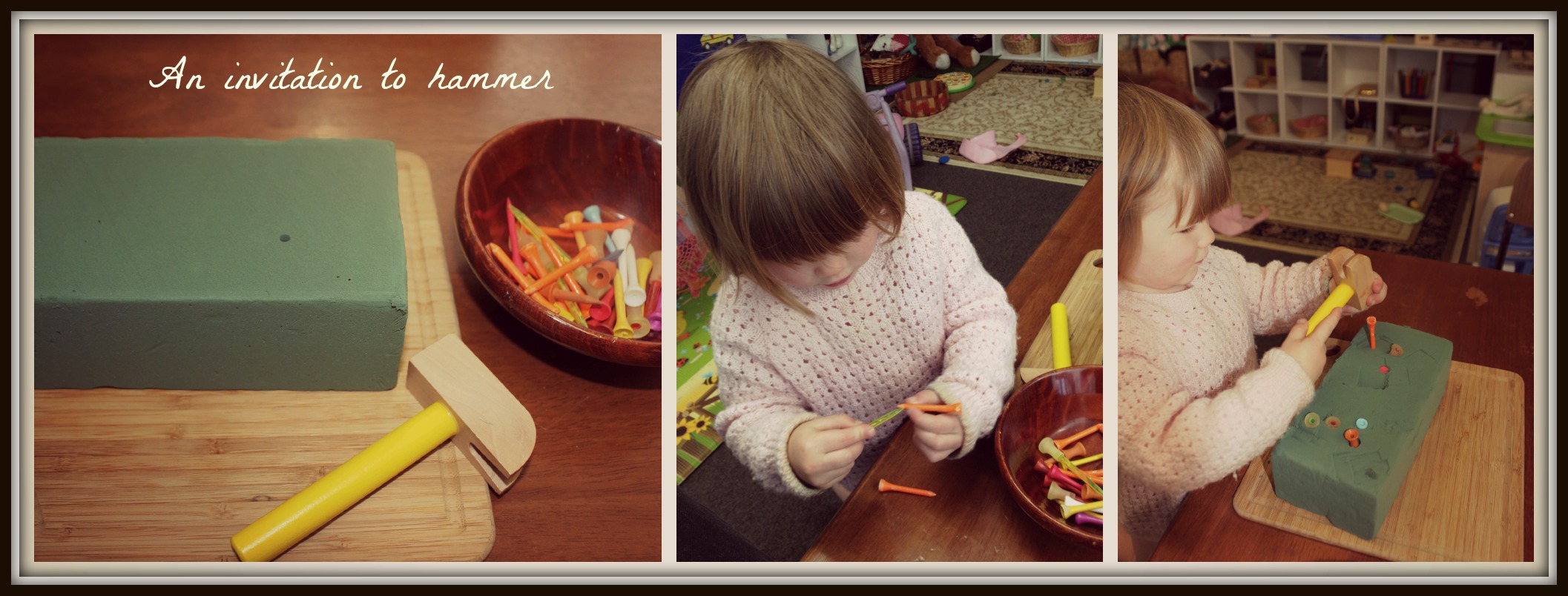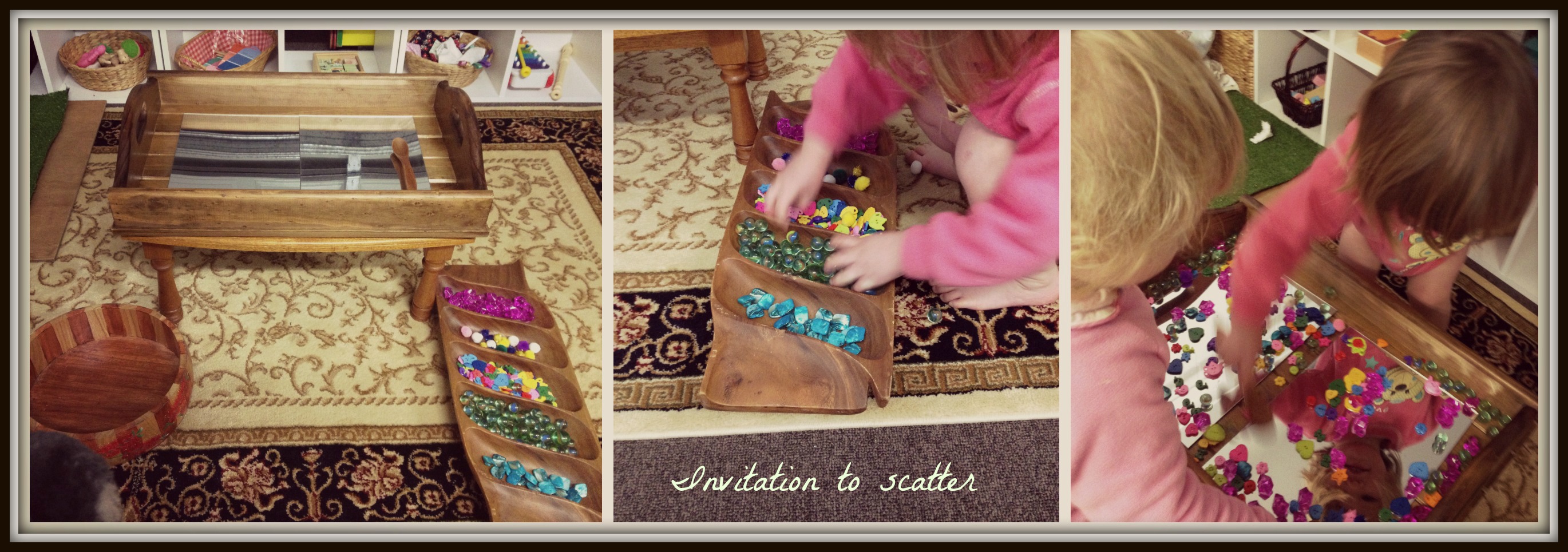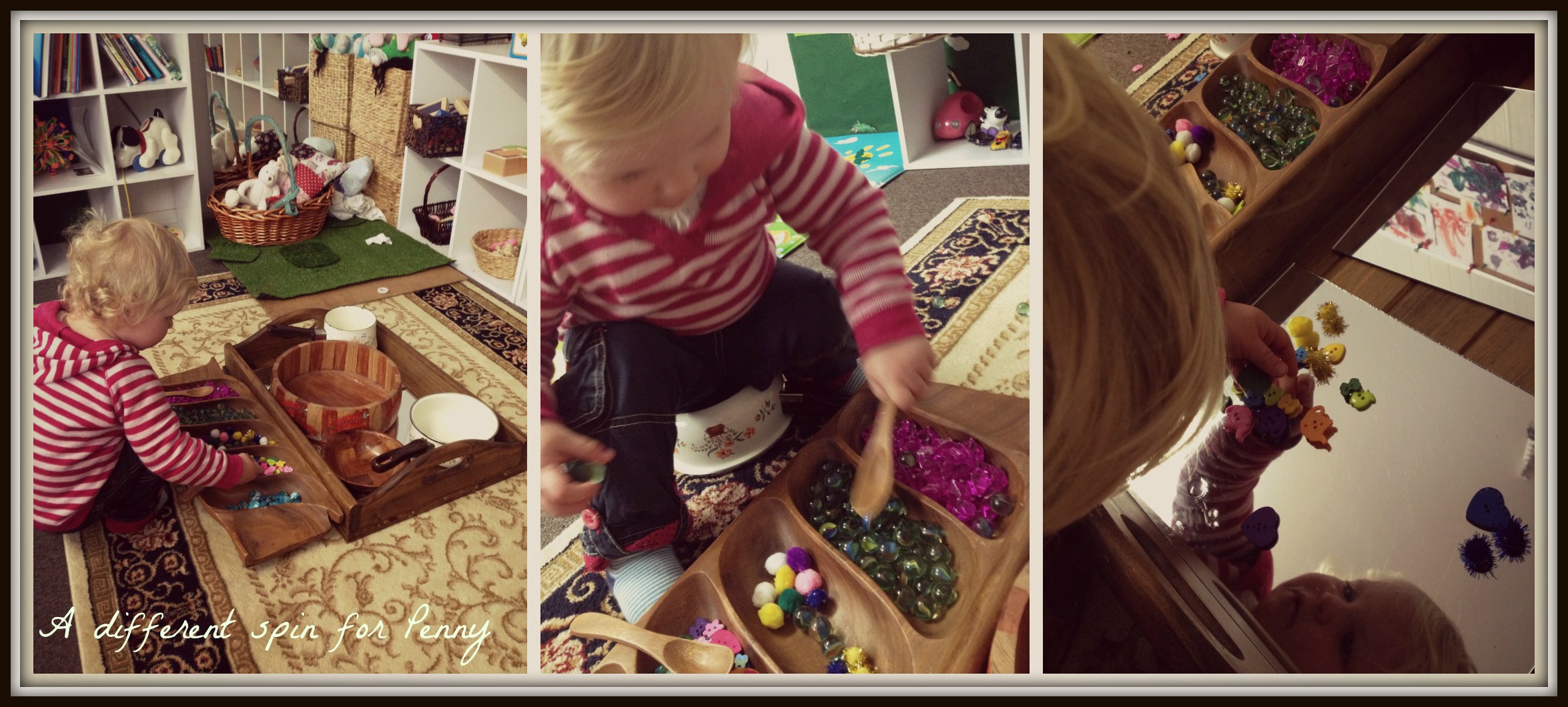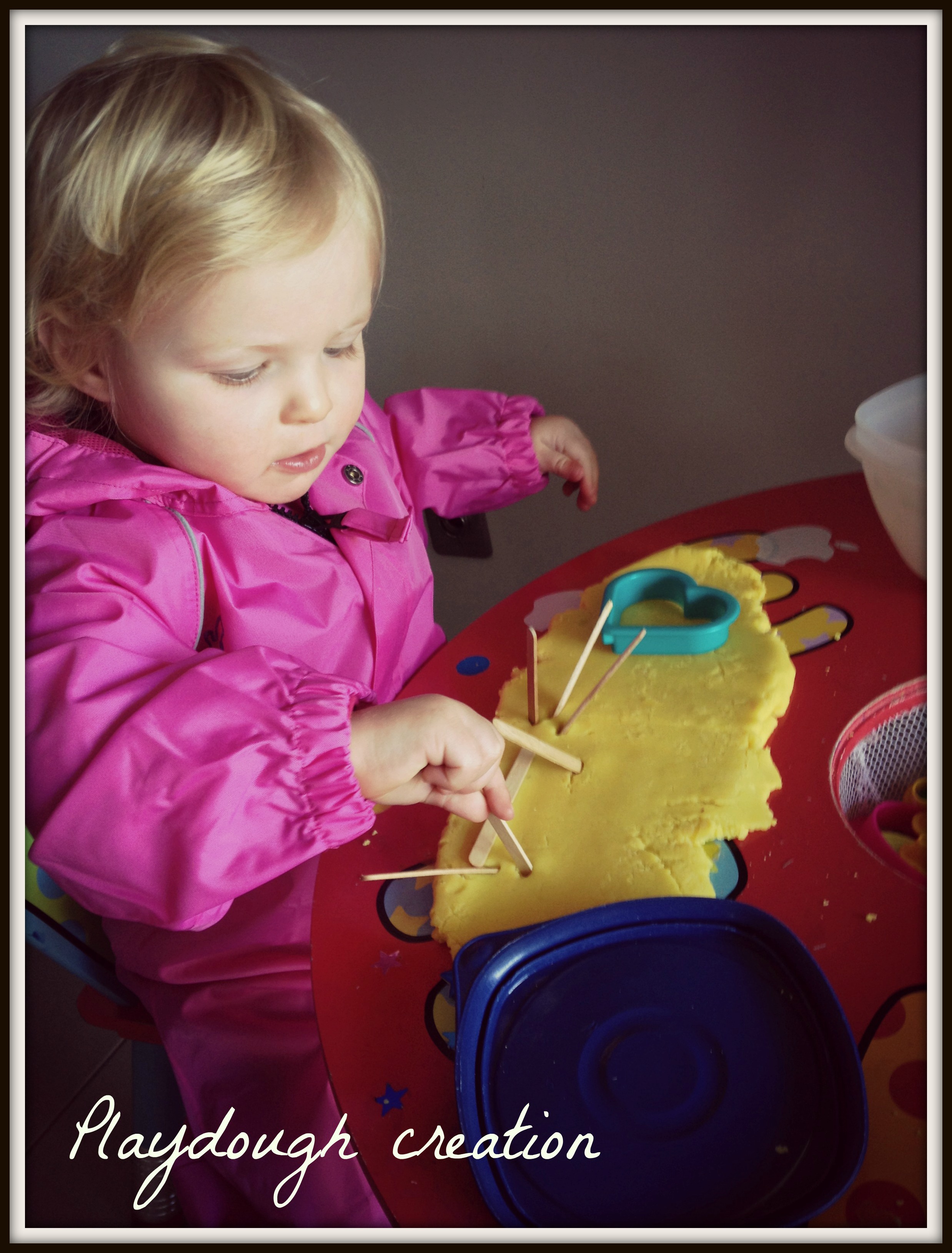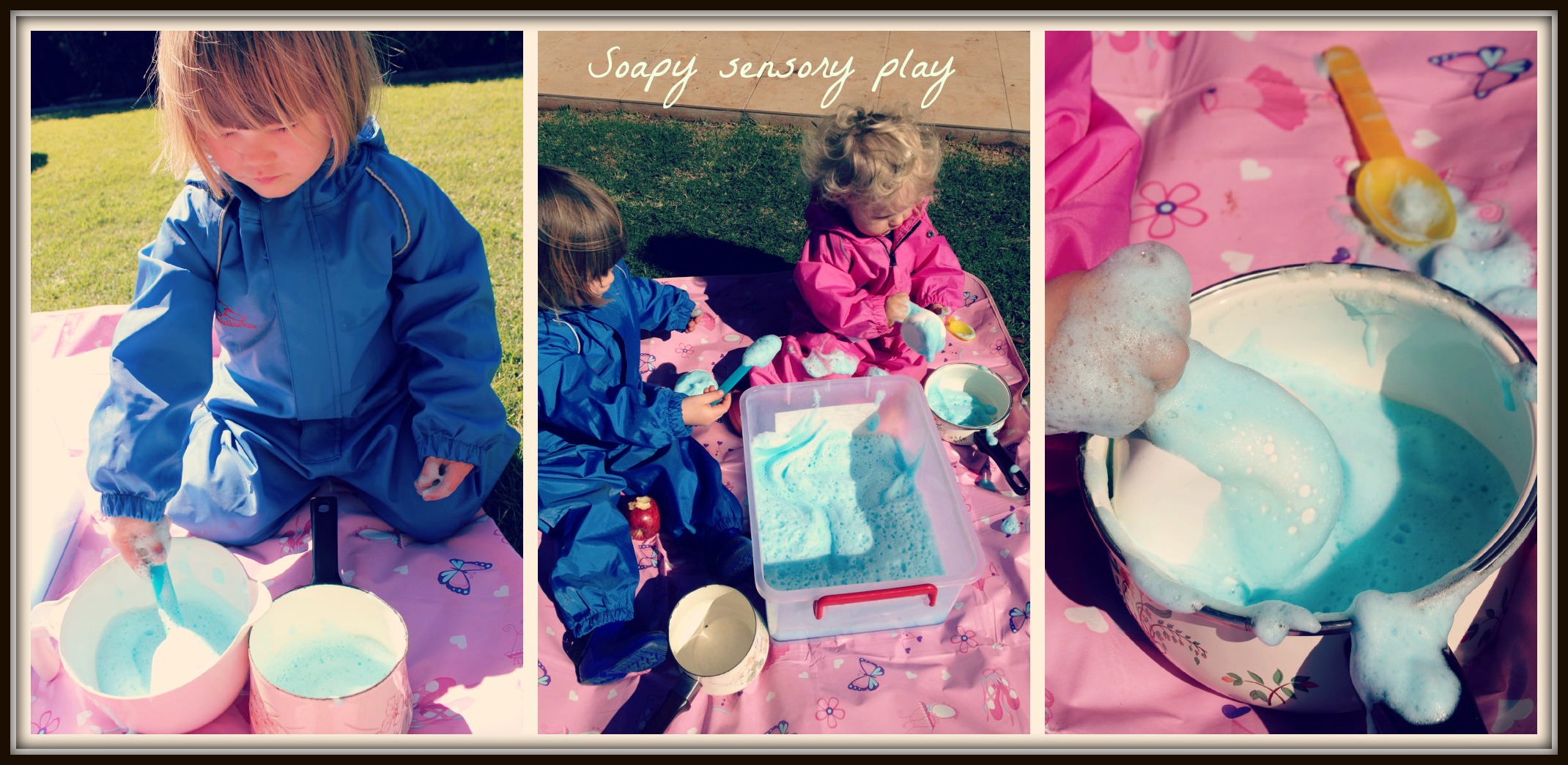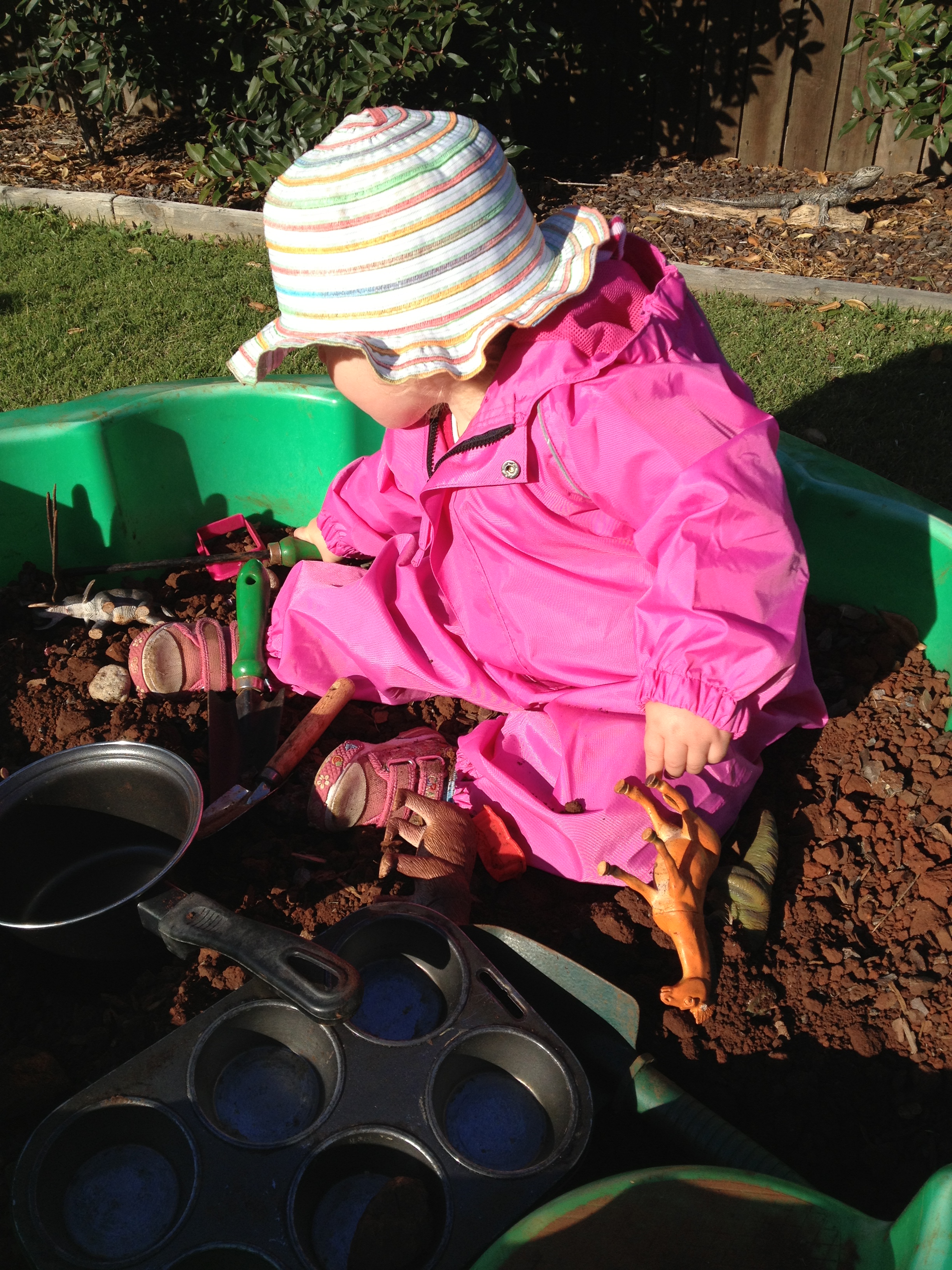As you know, I love to create little activities that invite my girls to discover, investigate and explore in their own way and in their own time. I have learned not to have an ‘agenda‘ with these invitations, knowing that my children’s minds, unlike mine, are blank slates with no preconceived ideas or expectations and consequently they engage in activities far differently than I would even dare to imagine.
My imagination and creativity has been reduced as I have grown up through life but theirs is still blossoming and developing and I love to see where it takes them through these invitations. The girls have always approached these activities with excitement and I have never had one overlooked or rejected.
Now, this sounds wonderful and amazing etc but the reality is that the average time that it takes my children (especially my two year old, Lucy) to discover an investigation, form a hypothesis, test it and then reach her conclusions, is roughly five minutes. And whilst I appreciate that age is not in her favour when it comes to attention span, I have often wondered whether there is something more to her seemingly limited one.
I have read and reread articles and examples from Janet Lansbury, Lisa Sunbury Gerber and a whole host of mothers who follow Magda Gerber’s RIE approach claiming that their (even younger) children are capable of playing for much longer periods of time on just the one activity. And, as I think about it, I realise that even my youngest, Penny (nearly 18 months) has shown more ability to stay focused on a task for extended periods of time. So what makes my eldest child become disinterested quickly in activities that I take a great deal longer to set up than she does to play them?
Deep down I have known the answer to this for quite sometime. Through my wonderful association with Kate from An Everyday Story, I have learned that in order for some children to become invested in their play, it needs to be something that they are already curious about or have initiated completely on their own. When providing them with opportunities for play and investigation, taking this into consideration can be the difference between them engaging with the task for prolonged periods of time (even days or weeks) and investigating it at a surface level only, skimming over the top and never truly wanting to do more.
Now, it can be very hard to really know what your child is interested in, especially if they are pre-verbal or still a little young to have obvious obsessions or interests. But the clues are there if you look. It could be that they have articulated an interest through asking a question or making a comment or it could be communicated in other ways such as through pretend play, an obsession with a particular book or simply showing delight during an experience they have had organically (ie through the normal course of daily play, outings or activities).
I have realised that whilst I was (and still am) providing my children with many fun and enriching experiences I was failing to involve them in the production of these. It’s like someone continually offering books for me to read on a topic about which I have no interest. I would probably start the book to see what it was like but would most likely turn away from it before it was finished if it did not tap into my own interests. This is precisely what my eldest child seems to be doing with my wonderful activities.
So, having had this revelation, I started really listening to my children; engaging them in conversations, watching them in play, looking for any signs of a deep seated interest or a curiosity that could be tapped into further. It came one day recently when we were walking through a little forest at the end of our street.
We often head down there of an afternoon as the kangaroos are out for their dinner and many birds are flocking, returning to feed and roost. We were sitting on a little vine that had grown into a U shape, perfect for swinging lightly back and forwards, when a bush turkey suddenly ran across the track in front of us and then flapped clumsily on a low branch of a nearby tree. Both girls sat captivated as it flew from branch to branch looking for a high place to safely bunker down for the night. By the time it had settled it was so high up that we could only just spot it.
It sparked a noticeable curiosity in Lucy and certainly seemed to capture Penny’s attention. As we were walking home, Lucy spotted a large, black feather on the ground, we picked it up and surmised about which bird could have lost this feather. We spoke about which birds were black including crows, magpies and pee wees as well as the most likely culprit, the bush turkey.
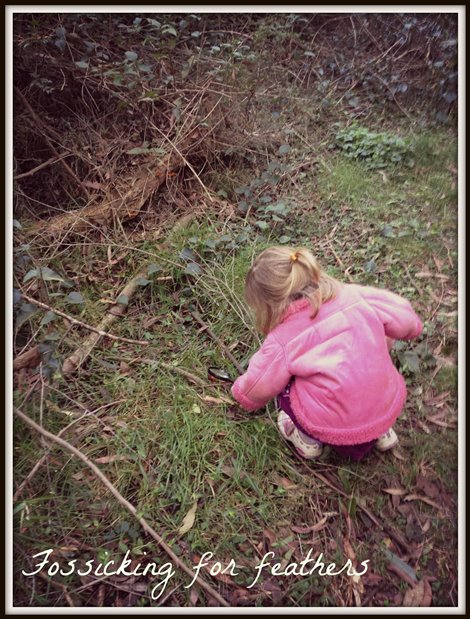
The next day, we had a magpie visit our backyard (as we often do) and Lucy was very excited to see it and asked if she could ‘give him her lunch’. Over the next few days and weeks, I thought about how I could keep this interest in birds alive through way of a project. I came across Kate’s lovely and inspiring bird project and was instantly struck by how simple, yet engaging and purposeful her ideas were. They were appealing to her children and allowed them to explore birds on many levels, in a meaningful and deep way. And thus began, our first project.
Firstly, as we had not a single bird book in our house, it was off to our local library to pick up some lovely child friendly ones the girls would enjoy, including a guide to Australian birds. Lucy really enjoys books so this was a perfect medium for her to learn more about these fascinating creatures.
We flicked through the books and looked for birds that were familiar. I was surprised by how many birds Lucy knew already by name such as crows, magpies and kookaburras. On our outings, we began noticing birds all around us, we spoke about colours and sizes and worked out the names of the ones we were not sure of using the guide book and the internet.
Keen to see more birds in our fairly sparse backyard, I spoke to Lucy about what would make them come down and visit us. Living relatively close to a small forest we actually get many birds flying overhead in the afternoons but they never stop to visit. Lucy thought that by calling to them they might come down so we tried but to no avail. It seemed they were not listening. I asked her where she thought they might be flying and she thought maybe ‘the park’. We then worked out that after the park they would head home for a bath and some dinner (as is our regular afternoon routine). So I took the lead for an invitation from this and decided on making a bird feeder so the birds could have dinner with us.
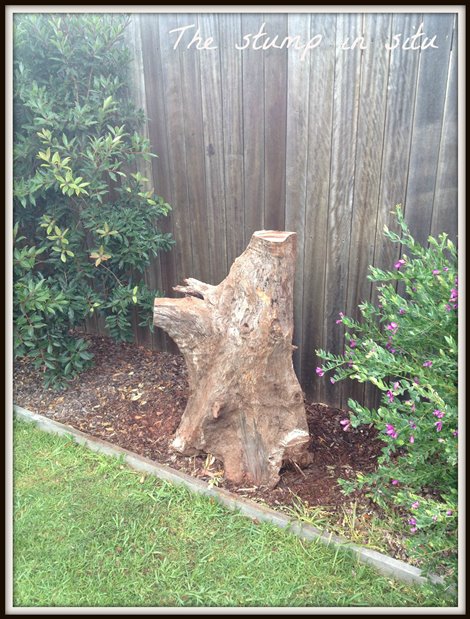
As luck would have it, amidst all our bird studies, my husband and I had come across a lovely old stump in a big dirt pile in a development across the road. In An Everyday Story’s blog, her children had built a simple bird feeder to encourage more birds into their yard using a similar stump. I set up some tools and materials in an engaging yet simple way to ensure the girls were not only involved in the project but could take some ownership and responsibility for it. It was exciting for them as they thought about all the birds they might see coming for dinner.

Lucy was responsible for building the feeder and then both the girls worked carefully scooping, pouring, carrying and filling the bird seed using cups and scoops.
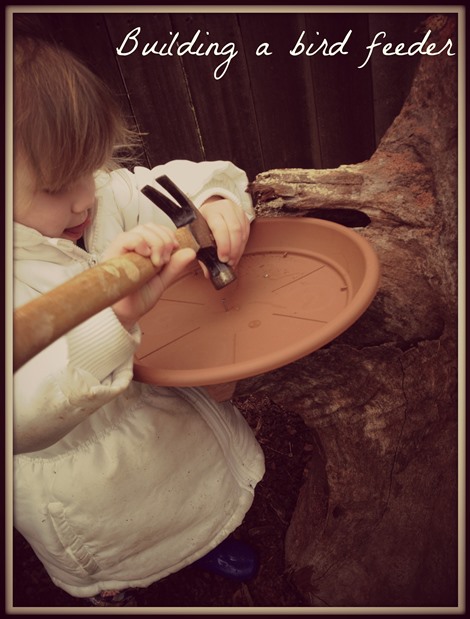
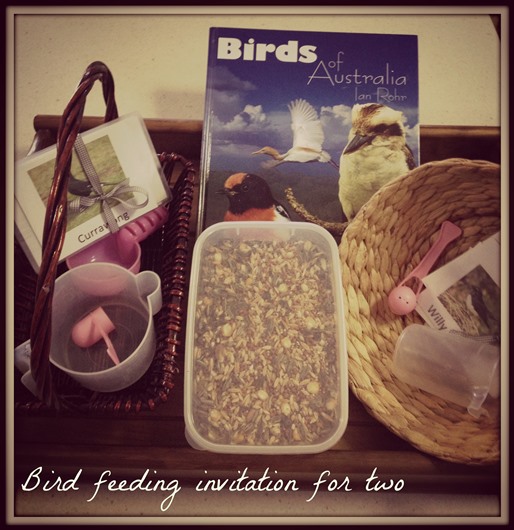
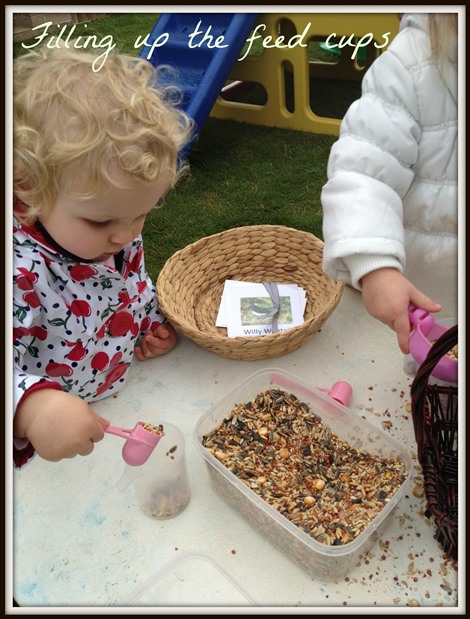
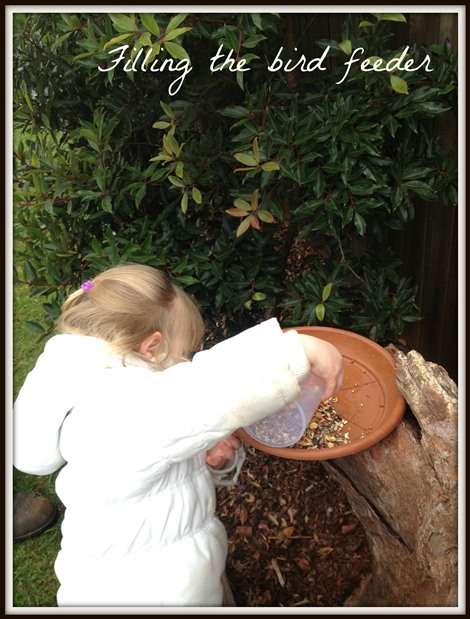
It took about a day before we saw our first bird visit the bird feeder and although it wasn’t a beautiful or exotic one the girls were so excited to see a peewee eating their seed. It must have felt so fulfilling for them to have been through the process and then seen its purpose come to fruition. To help with our bird identification, I made small laminated cards for the girls (a set each) using only the birds I knew were in the area. These have been wonderful for the girls as they have watched a variety of birds come to feed and then used the cards to identify each one.
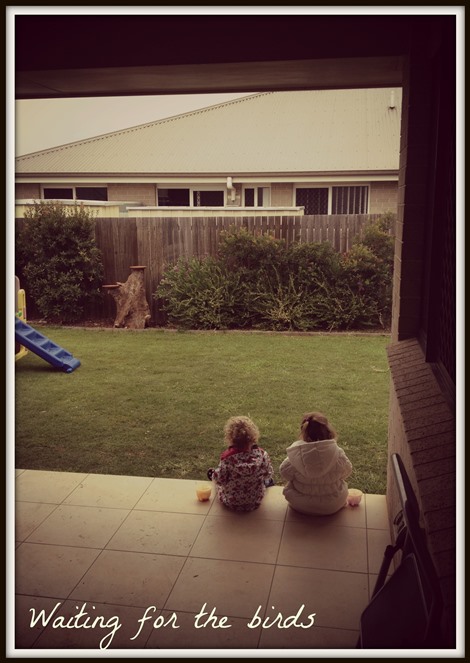
To further our study into the birds we collected more feathers on one of our walks and then did some painting using them as brushes. We also regularly use the little laminated cards in matching games which Lucy is becoming very adept at. She is now able to articulate the names of most of the birds that come into our yard including currawongs, peewees, house sparrows, blue fairy wrens (our favourites) and willy wagtails.
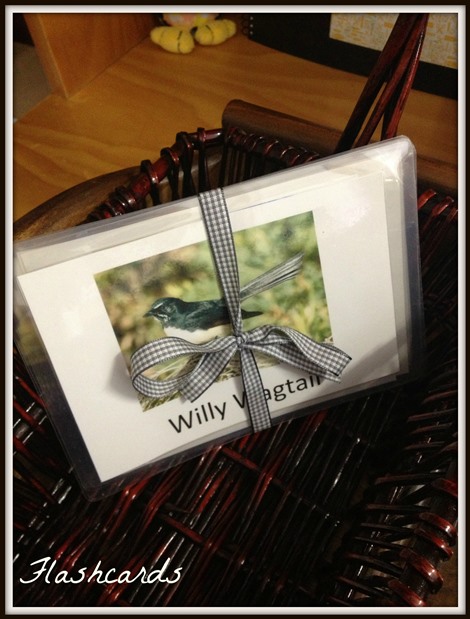
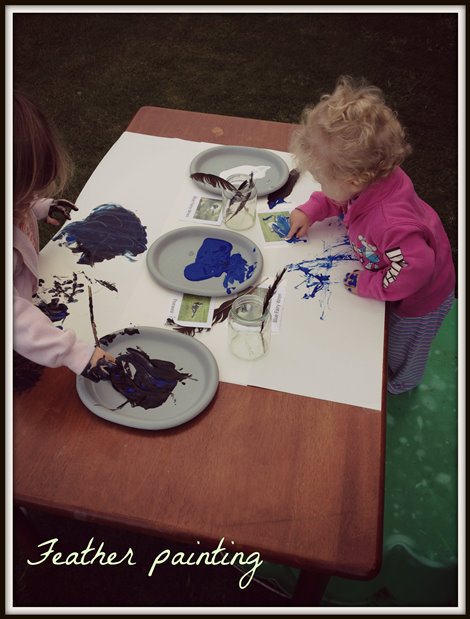
The girls continue to feed the birds on a regular basis and have since added a bath for them to wash in. I am hoping that by planting a few more native shrubs this spring we might entice some more colourful birds in through the warmer months. It has been so wonderful to see my children learning in a meaningful way and although I will continue to offer them invitations to explore in a variety of mediums and contexts, I am now more open to using my children to steer the investigations based on the interests that they develop along the way.
